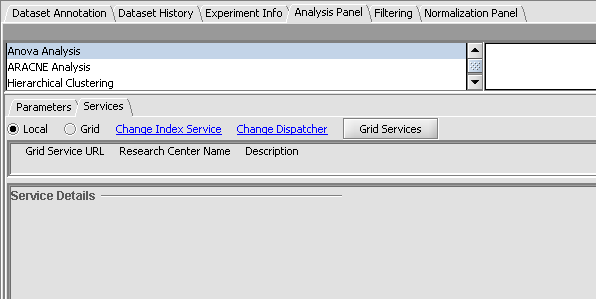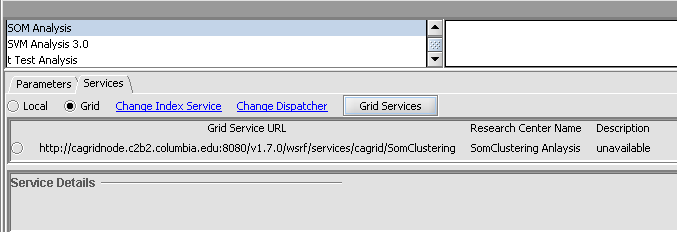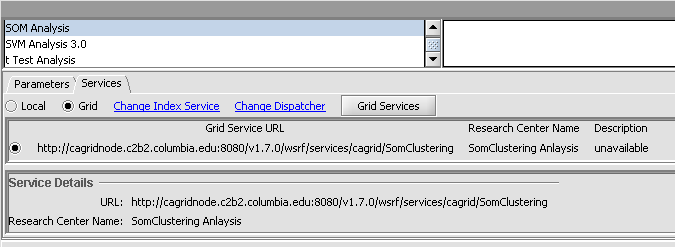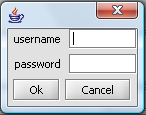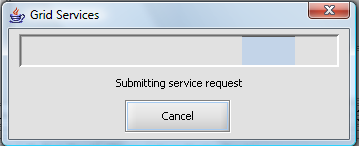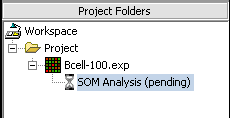Difference between revisions of "Grid Services"
(→Further aspects of running grid jobs) |
m (moved Tutorial - Grid Services to Grid Services) |
(No difference)
| |
Revision as of 17:05, 9 December 2010
|
Home | Quick Start | Basics | Menu Bar | Preferences | Component Configuration Manager | Workspace | Information Panel | Local Data Files | File Formats | caArray | Array Sets | Marker Sets | Microarray Dataset Viewers | Filtering | Normalization | Tutorial Data | geWorkbench-web Tutorials |
Analysis Framework | ANOVA | ARACNe | BLAST | Cellular Networks KnowledgeBase | CeRNA/Hermes Query | Classification (KNN, WV) | Color Mosaic | Consensus Clustering | Cytoscape | Cupid | DeMAND | Expression Value Distribution | Fold-Change | Gene Ontology Term Analysis | Gene Ontology Viewer | GenomeSpace | genSpace | Grid Services | GSEA | Hierarchical Clustering | IDEA | Jmol | K-Means Clustering | LINCS Query | Marker Annotations | MarkUs | Master Regulator Analysis | (MRA-FET Method) | (MRA-MARINa Method) | MatrixREDUCE | MINDy | Pattern Discovery | PCA | Promoter Analysis | Pudge | SAM | Sequence Retriever | SkyBase | SkyLine | SOM | SVM | T-Test | Viper Analysis | Volcano Plot |
Contents
Overview
Most analytic routines (e.g. clustering, t-test etc.) available in geWorkbench are implemented directly in the geWorkbench desktop application code. They run on your local PC.
In cooperation with caBIG(R), the National Cancer Institute's Cancer Biomedical Informatics Grid program, a number of the geWorkbench analysis components have also been adapted to run as services on caGrid, the primary infrastructure component of caBIG. In accordance with caBIG principles, each has a well-defined object design and a public application programming interface (API) via which data can be exchanged. Annotations describing each service, object and parameter are stored in the caDSR (NCI's Cancer Data Standards Repository), using standard vocabulary terms available from the Enterprise Vocabulary Services (EVS).
Some services are implemented only remotely, such as Mark-Us, where the grid component serves as an interface to a web service.
Each geWorkbench analysis component that has an associated grid service will show a Services tab in the Analysis framework, adjacent to the Parameters tab.
Services tab
Local/Grid
Selects whether to run the analysis locally (within geWorkbench on the desktop) or on the grid.
Change Index Service
Index Services maintain lists of available grid services. geWorkbench is delivered with the URL of a Columbia Index Service preconfigured, which provides access to demonstration grid service implementations.
Change Dispatcher
The Dispatcher is a geWorkbench server-side component which provides connectivity between geWorkbench and caGrid. geWorkbench is delivered with the URL of a Columbia Dispatcher Service preconfigured.
Grid Services
When the Grid Services button is pushed, the list of available services of the desired type will be retrieved from the specified index service. The list will appear in the area below, with each available service preceeded by a radio button by means of which it can be selected.
Service Details
Once a particular grid service has been selected (via its radio button), the details of the service will be displayed in the lower window.
Running a grid job
1. On the Services tab, select grid. 2. If needed, choose an appropriate Index service and/or Dispatcher service. 3. Push the Grid Services button 4. Once the grid service has been chosen, return to the Parameters tab, and when ready, push the Analyze button.
A dialog will appear asking for a Username and Password. If you possess the appropriate credentials for the service you have selected, enter them here and push OK.
A message will indicate that the job is being submitted.
While the job is running, a node marked "Pending" will be placed in the Project Folders component, preceeded by an hourglass icon. Note that the progress bar that appears when analyses are run locally within geWorkbench will not appear for grid jobs.
Further aspects of running grid jobs
- The grid job, once started, is independent of geWorkbench. The dispatcher component cooperates with geWorkbench to track job status. A geWorkbench workspace containing running grid jobs can be saved and later restored. At the time that the saved workspace is reloaded, geWorkbench will resume monitoring the job for completion, and retrieve the finished results if available.
- Once a grid job has been started, its execution cannot be canceled from within geWorkbench. However, the "pending" node can be removed from the Project Folders component. In this case, geWorkbench will not receive any results when the calculation actually completes.
